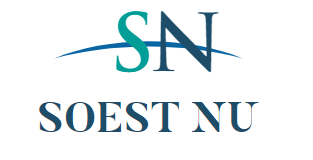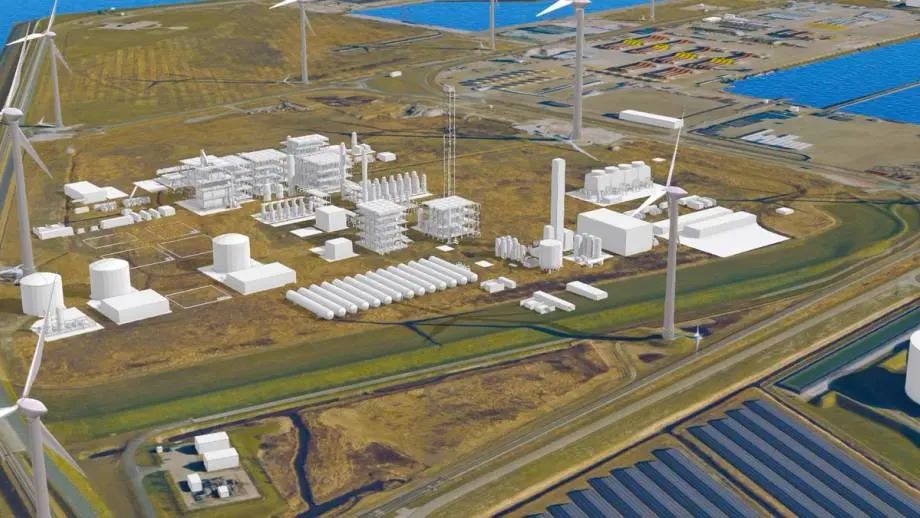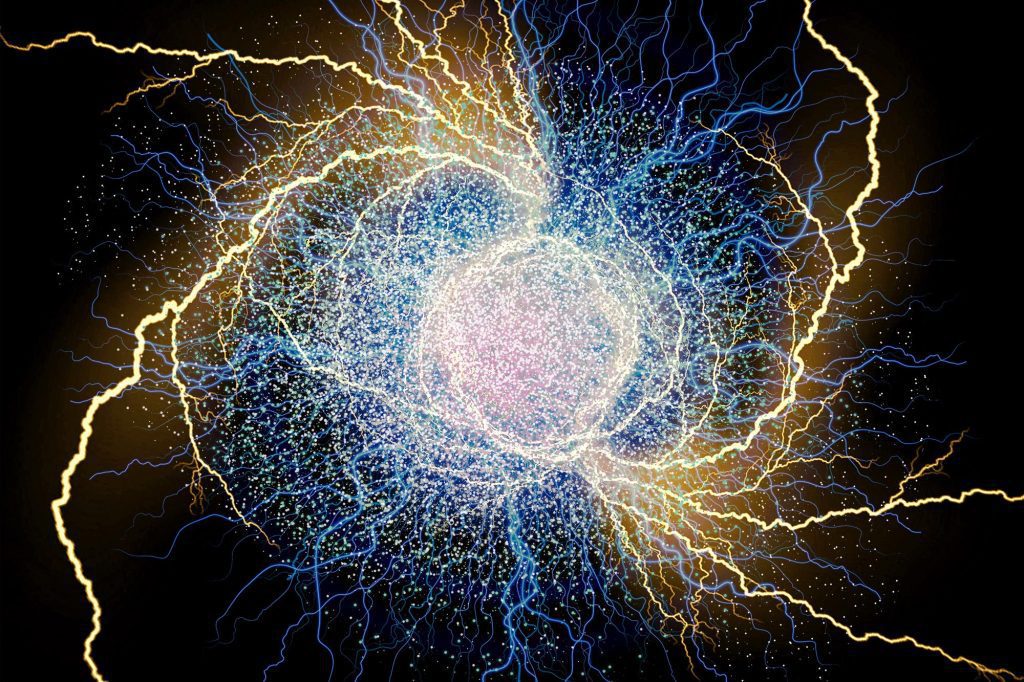Lang verwachte maar nooit waargenomen vloeistofachtige elektronenwervels kunnen worden gebruikt voor de volgende generatie energiezuinige elektronica. Krediet: Kristen Danilov, MIT
Lang voorspeld maar nooit eerder waargenomen, kan het vloeistofachtige gedrag van het elektron worden benut voor efficiënte, energiezuinige elektronica van de volgende generatie.
Hoewel watermoleculen verschillende moleculen zijn, stromen ze samen als vloeistoffen, waardoor stromingen, golven, wervelingen en andere klassieke vloeistoffenomenen ontstaan.
Met elektriciteit is dat niet hetzelfde. Terwijl elektrische stroom op dezelfde manier bestaat uit verschillende deeltjes – in dit geval elektronen – zijn de deeltjes zo klein dat elk collectief gedrag tussen hen wordt overstemd door grotere effecten wanneer de elektronen door basismetalen gaan. In bepaalde materialen en onder specifieke omstandigheden verdwijnen deze effecten echter en kunnen de elektronen elkaar rechtstreeks beïnvloeden. In deze specifieke gevallen kunnen de elektronen collectief stromen als vloeistoffen.
Nu, natuurkundigen in[{” attribute=””>MIT and the Weizmann Institute of Science have finally observed electrons flowing in vortices, or whirlpools — a hallmark of fluid flow that theorists predicted electrons should exhibit, but that has never been seen before now.
“Electron vortices are expected in theory, but there’s been no direct proof, and seeing is believing,” says Leonid Levitov, professor of physics at MIT. “Now we’ve seen it, and it’s a clear signature of being in this new regime, where electrons behave as a fluid, not as individual particles.”
Reported on July 6, 2022, in the journal Nature, the observations could inform the design of more efficient electronics.
“We know when electrons go in a fluid state, [energy] De dissipatie neemt af, wat belangrijk is bij het ontwerpen van elektronica met een laag vermogen”, zegt Levitov. “Deze nieuwe waarneming is een volgende stap in die richting.”
Levitov is co-auteur van het nieuwe onderzoeksartikel, samen met Eli Zeldov en anderen aan het Weizmann Institute of Science in Israël en de Universiteit van Colorado in Denver.

In de meeste materialen, zoals goud (links), stromen elektronen met een elektrisch veld mee. Maar MIT-natuurkundigen hebben ontdekt dat in het exotische wolfraamdechloride (rechts), deeltjes van richting kunnen veranderen en als een vloeistof kunnen ronddraaien. Krediet: met dank aan de onderzoekers
collectieve druk
Wanneer elektriciteit door de meeste gewone metalen en halfgeleiders gaat, worden de torsie- en elektronenpaden in de stroom beïnvloed door onzuiverheden in het materiaal en trillingen tussen de atomen van het materiaal. Deze processen domineren het elektronengedrag in gewone materialen.
Maar theoretici hebben gespeculeerd dat bij afwezigheid van dergelijke gewone klassieke processen, kwantumeffecten het over zouden moeten nemen. De elektronen moeten namelijk elkaars precieze kwantumgedrag oppikken en collectief bewegen, als een stroperige, honingachtige elektronenvloeistof. Dit vloeistofachtige gedrag zou zich moeten voordoen in ultrazuivere materialen en bij temperaturen dicht bij nul.
In 2017 rapporteerden Levitov en collega’s van de Universiteit van Manchester handtekeningen van zo’n vloeistofachtig elektron gedrag in grafeenEn de[{” attribute=””>atom-thin sheet of carbon onto which they etched a thin channel with several pinch points. They observed that a current sent through the channel could flow through the constrictions with little resistance. This suggested that the electrons in the current were able to squeeze through the pinch points collectively, much like a fluid, rather than clogging, like individual grains of sand.
This first indication prompted Levitov to explore other electron fluid phenomena. In the new study, he and colleagues at the Weizmann Institute for Science looked to visualize electron vortices. As they write in their paper, “the most striking and ubiquitous feature in the flow of regular fluids, the formation of vortices and turbulence, has not yet been observed in electron fluids despite numerous theoretical predictions.”
Channeling flow
To visualize electron vortices, the team looked to tungsten ditelluride (WTe2), an ultraclean metallic compound that has been found to exhibit exotic electronic properties when isolated in single-atom-thin, two-dimensional form.
“Tungsten ditelluride is one of the new quantum materials where electrons are strongly interacting and behave as quantum waves rather than particles,” Levitov says. “In addition, the material is very clean, which makes the fluid-like behavior directly accessible.”
The researchers synthesized pure single crystals of tungsten ditelluride, and exfoliated thin flakes of the material. They then used e-beam lithography and plasma etching techniques to pattern each flake into a center channel connected to a circular chamber on either side. They etched the same pattern into thin flakes of gold — a standard metal with ordinary, classical electronic properties.
They then ran a current through each patterned sample at ultralow temperatures of 4.5 kelvins (about -450 degrees Fahrenheit) and measured the current flow at specific points throughout each sample, using a nanoscale scanning superconducting quantum interference device (SQUID) on a tip. This device was developed in Zeldov’s lab and measures magnetic fields with extremely high precision. Using the device to scan each sample, the team was able to observe in detail how electrons flowed through the patterned channels in each material.
The researchers observed that electrons flowing through patterned channels in gold flakes did so without reversing direction, even when some of the current passed through each side chamber before joining back up with the main current. In contrast, electrons flowing through tungsten ditelluride flowed through the channel and swirled into each side chamber, much as water would do when emptying into a bowl. The electrons created small whirlpools in each chamber before flowing back out into the main channel.
“We observed a change in the flow direction in the chambers, where the flow direction reversed the direction as compared to that in the central strip,” Levitov says. “That is a very striking thing, and it is the same physics as that in ordinary fluids, but happening with electrons on the nanoscale. That’s a clear signature of electrons being in a fluid-like regime.”
The group’s observations are the first direct visualization of swirling vortices in an electric current. The findings represent an experimental confirmation of a fundamental property in electron behavior. They may also offer clues to how engineers might design low-power devices that conduct electricity in a more fluid, less resistive manner.
“Signatures of viscous electron flow have been reported in a number of experiments on different materials,” says Klaus Ensslin, professor of physics at ETH Zurich in Switzerland, who was not involved in the study. “The theoretical expectation of vortex-like current flow has now been confirmed experimentally, which adds an important milestone in the investigation of this novel transport regime.”
Reference: “Direct observation of vortices in an electron fluid” by A. Aharon-Steinberg, T. Völkl, A. Kaplan, A. K. Pariari, I. Roy, T. Holder, Y. Wolf, A. Y. Meltzer, Y. Myasoedov, M. E. Huber, B. Yan, G. Falkovich, L. S. Levitov, M. Hücker and E. Zeldov, 6 July 2022, Nature.
DOI: 10.1038/s41586-022-04794-y
This research was supported, in part, by the European Research Council, the German-Israeli Foundation for Scientific Research and Development, and by the Israel Science Foundation.

“Amateur-organisator. Wannabe-bierevangelist. Algemene webfan. Gecertificeerde internetninja. Fanatieke lezer.”










More Stories
“Devilish Comet” 12P/Pons-Brooks is op weg naar de zon. Zul jij overleven?
De Antarctische ijsplaat zo groot als Frankrijk springt plotseling een of twee keer per dag omhoog: ScienceAlert
De kern van Pluto is waarschijnlijk ontstaan door een botsing in de oudheid